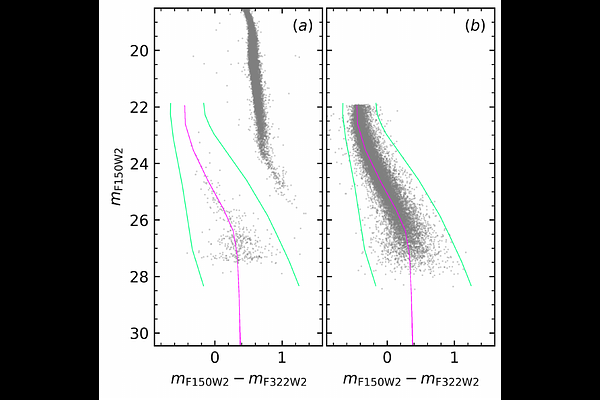James Webb Space Telescope observations of the white dwarf cooling sequence of 47 Tucanae

James Webb Space Telescope observations of the white dwarf cooling sequence of 47 Tucanae
M. Salaris, M. Scalco, L. R. Bedin, S. Cassisi
AbstractWe present a study of the white dwarf (WD) cooling sequence of the globular cluster 47 Tucanae (47 Tuc or NGC 104) using deep infrared observations with the James Webb Space Telescope (JWST). By combining these data with ultra-deep optical imaging from the Hubble Space Telescope (HST) taken ~12 years earlier, we derived precise proper motions (PMs) and isolated a clean sample of WD cluster members. We estimated the cluster's age by comparing the observed WD cooling sequence luminosity function (LF), derived from JWST photometry, with theoretical models, obtaining a value of 11.8 +/- 0.5 Gyr, in agreement with main sequence turn-off ages, and ages determined from the masses and radii of two eclipsing binaries in the cluster. The age determined from the infrared LF is consistent with the optical LF based on the HST photometry. However, small discrepancies exist between the shape of the observed and theoretical LFs. To investigate these differences, we tested the cooling times of WD models populating the bright part of the observed cooling sequence against a semi-empirical calibration from the literature, based on bright WDs in 47 Tuc, finding agreement within less than 2 sigma. A more detailed analysis of dynamical effects and the impact of multiple stellar populations on the WD mass distribution in the observed field will be essential for addressing this discrepancy in future studies.